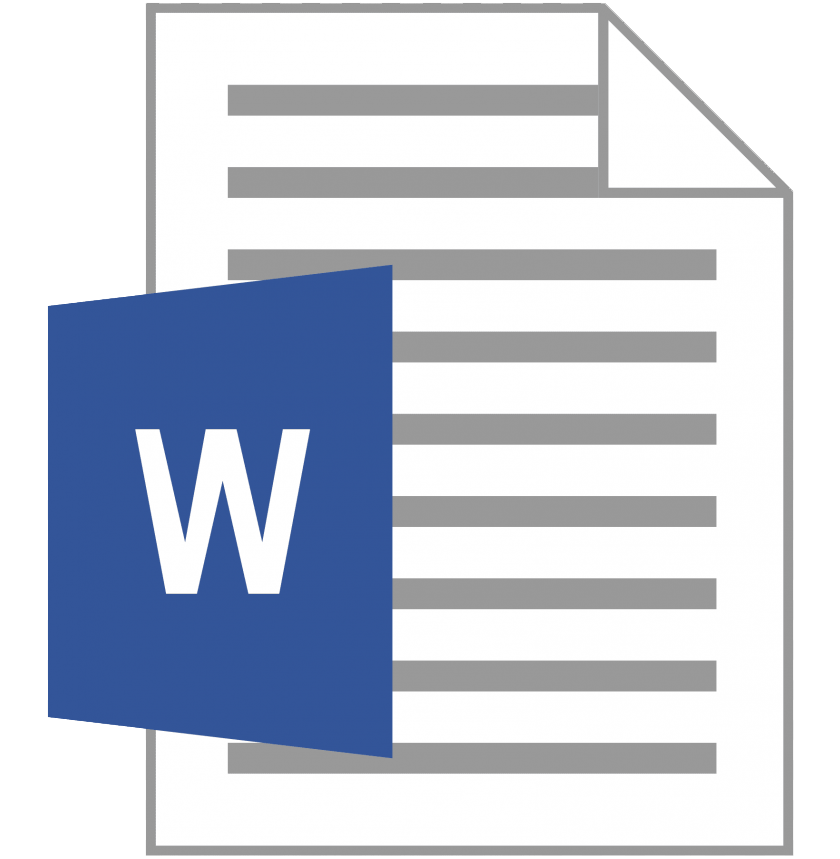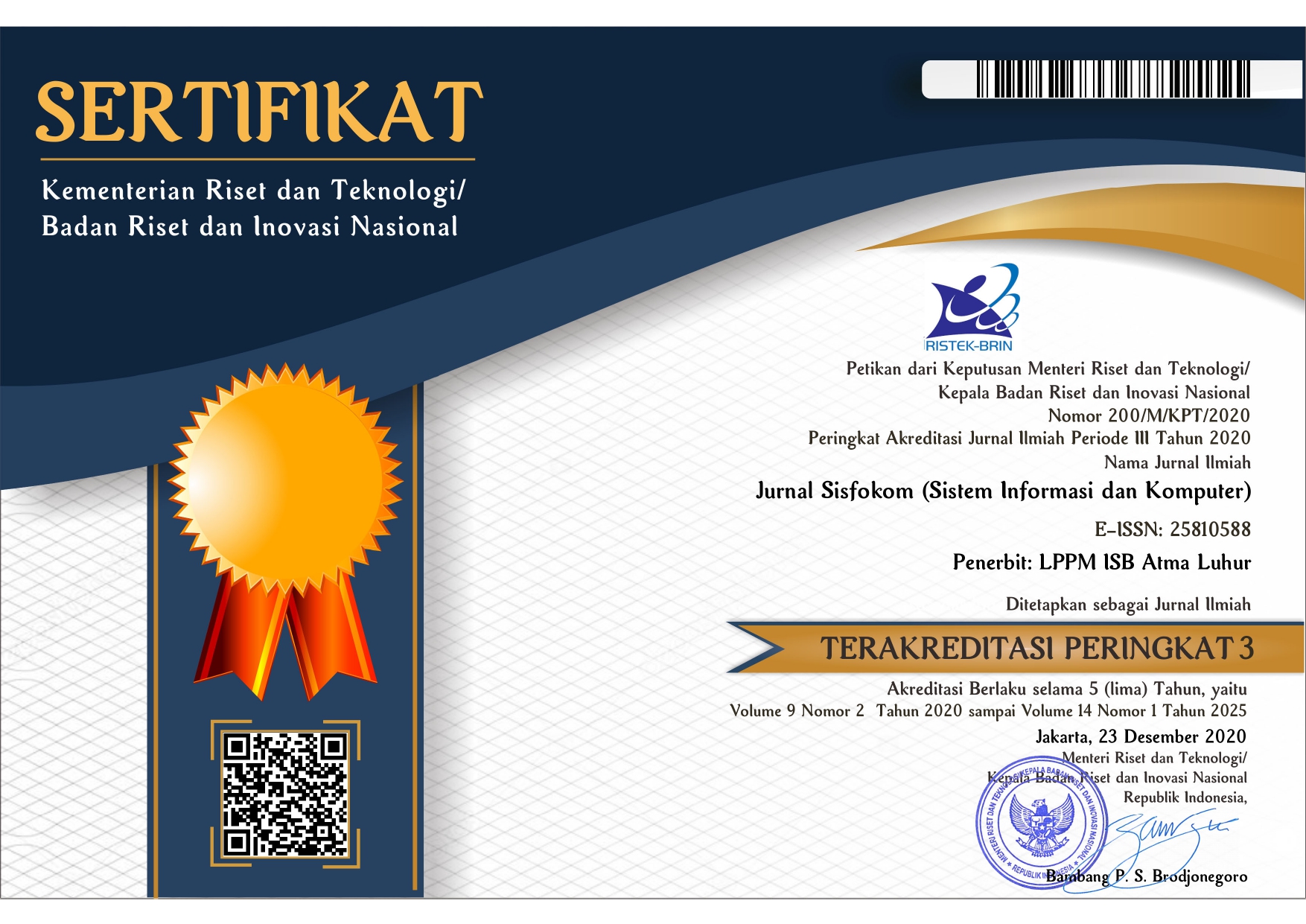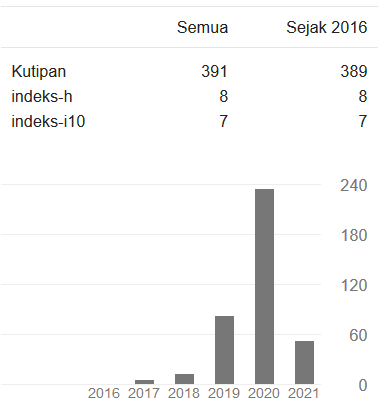EEG Signal Classification using K-Nearest Neighbor Method to Measure Impulsivity Level
DOI:
https://doi.org/10.32736/sisfokom.v13i2.2154Keywords:
EEG Signal, K-Nearest Neighbors, Brainwaves, ClassificationAbstract
Impulsivity is the tendency to act without considering consequences or without careful planning. It involves a quick response to a stimulus without sufficient consideration of the consequences. Impulsivity needs to be measured and detected because it has a significant impact on various aspects of a person's life. The factors that influence the level of impulsivity include social environment, stress level, mental health, and genetic factors. Impulsivity can be divided into multiple components, such as reduced sensitivity to unfavorable behavioral outcomes, a disregard for long-term implications, and quick and spontaneous responses to stimuli. Electroencephalogram (EEG) studies can identify specific brain wave patterns such as, Alpha, Betha, Theta, and Gamma waves everything based on an individual brain's level of impulsivity. Signals from the brain are processed to extract specific features that reflect the user's intentions. EEG records brain activity without surgery, and this information is used for the diagnosis, monitoring, and treatment of neurological diseases, as well as scientific research on the brain and mind. K-Nearest Neighbor (KNN) is a classification algorithm that functions by utilizing several K nearest data values (its neighbors) as a reference to determine the class of new data. The K-Nearest Neighbors (KNN) algorithm is used for classification, clustering, and pattern recognition in EEG data where clustering is in 4 classifications (Impulsive, Not Impulsive, Potentially Impulsive, and Very Potentially Impulsive). This classification model shows high accuracy (Training Data: 94.7%, Testing: 91.3%, and Validation Data: 91.8%). This research shows that the KNN algorithm is effective for assessing the degree of impulsivity.References
Lee, J. Y., Park, S. M., Kim, Y. J., Kim, D. J., Choi, S. W., Kwon, J. S., & Choi, J. S. (2017). Resting-state EEG activity related to impulsivity in gambling disorder. Journal of Behavioral Addictions, 6(3), 387–395. https://doi.org/10.1556/2006.6.2017.055
MEYE, F. J., & DIGIROLAMO, G. J. (2007). Handbook of Psychophysiology (3rd edn). By J. T. Cacioppo, L. G. Tassinary and G. G. Berntson. (Pp. 908; $175.00; ISBN 0521844711 hb.) Cambridge University Press. 2007. Psychological Medicine, 37(12), 1818–1819. https://doi.org/10.1017/s0033291707001201
Bongers, P., van de Giessen, E., Roefs, A., Nederkoorn, C., Booij, J., van den Brink, W., & Jansen, A. (2015). Being impulsive and obese increases susceptibility to speeded detection of high-calorie foods. Health Psychology, 34(6), 677–685. https://doi.org/10.1037/hea0000167
Candra, D., & Novitasari, R. (n.d.). Klasifikasi Sinyal EEG Menggunakan Metode Fuzzy C-Means Clustering (FCM) Dan Adaptive Neighborhood Modified Backpropagation (ANMBP). http://sccn.ucsd.edu/~arno/fam2data/publicly_
Fitriawati Zakiyyah, A. (2021). Klasifikasi Emosi Untuk Mengetahui Pengalaman Emosional Melalui Sinyal EEG Menggunakan Algoritma Artificial Neural Network (Vol. 3, Issue 2).
Lestari, S. I. P. (2018). Pengaruh Price Discount dan Bonus Pack terhadap Impulse Buying melalui Nilai Hedonik di Carrefour Surakarta. Jurnal Maksipreneur: Manajemen, Koperasi, Dan Entrepreneurship, 7(2), 129. https://doi.org/10.30588/jmp.v7i2.362
Turnip, A., Soetraprawata, D., & Kusumandari, D. E. (2013). A Comparison of EEG Processing Methods to Improve the Performance of BCI. International Journal of Signal Processing Systems, 63–67. https://doi.org/10.12720/ijsps.1.1.63-67
Hisyamudin, N., Nor, M., Emran, A., Khalid, I. A., Rasidi, M., Mohd, I., Mohideen Batcha, F., Mubarak, A., Arifin, T., Zaman, I., Sofian, B., Mohd, M., Sani, A., Waluyo, M. J., Siswanto, A., Ahmad, A., Rahmahwati, A., Akmal, A., Mohammed, N., … Rahim, A. (2017). INTERNATIONAL CONFERENCE ON MECHANICAL AND MANUFACTURING ENGINEERING 2017 SCIENTIFIC EDITORS.
Mira Yulia, Anita, dan Cantika Miranda “Klasifikasi Sinyal EEG dengan Stimuli Aromatik Menggunakan Metode Support Vector Machine” , Universitas Prima Indonesia, 2019.
Turnip, A., & Hong, K.-S. (2012). CLASSIFYING MENTAL ACTIVITIES FROM EEG-P300 SIGNALS USING ADAPTIVE NEURAL NETWORKS. In International Journal of Innovative Computing, Information and Control ICIC International c (Vol. 8, Issue 9) .
Aris Catur Bintoro “Pemeriksaan EEG untuk Diagnosis dan Monitoring pada Kelainan Neurologi”, Clinical Practice”, 2012.
Aris Catur Bintoro “Pemeriksaan EEG untuk Diagnosis dan Monitoring pada Kelainan Neurologi”, Clinical Practice”, 2012.
Shimodaira H. Meningkatkan inferensi prediktif dalam pergeseran kovariat dengan memberi bobot pada fungsi log-likelihood. Inferensi Rencana Stat J. 2000, 90(2): 227–244.
Nafi, N., & Darma Setiawan, B. (2017). Penerapan Metode K-Nearest Neighbor (KNN) dan Metode Weighted Product (WP) Dalam Penerimaan Calon Guru Dan Karyawan Tata Usaha Baru Berwawasan Teknologi (Studi Kasus : Sekolah Menengah Kejuruan Muhammadiyah 2 Kediri) (Vol. 1, Issue 5). http://j-ptiik.ub.ac.id
Nafi, N., & Darma Setiawan, B. (2017). Penerapan Metode K-Nearest Neighbor (KNN) dan Metode Weighted Product (WP) Dalam Penerimaan Calon Guru Dan Karyawan Tata Usaha Baru Berwawasan Teknologi (Studi Kasus : Sekolah Menengah Kejuruan Muhammadiyah 2 Kediri) (Vol. 1, Issue 5). http://j-ptiik.ub.ac.id
Nafi, N., & Darma Setiawan, B. (2017). Penerapan Metode K-Nearest Neighbor (KNN) dan Metode Weighted Product (WP) Dalam Penerimaan Calon Guru Dan Karyawan Tata Usaha Baru Berwawasan Teknologi (Studi Kasus : Sekolah Menengah Kejuruan Muhammadiyah 2 Kediri) (Vol. 1, Issue 5). http://j-ptiik.ub.ac.id
Suci Aulia, Sugondo Hadiyoso, Dadar Nur Ramadan “Analisis Perbandingan KNN dengan SVM untuk Klasifikasi Penyakit Diabetes Retinopati berdasarkan Citra Eksudat dan Mikroaneurisma” , 2015.
Mardi Turnip, Prada W. Siregar “Decoding Neural Signatures: Develop Drugs Addiction Level through EEG Patterns based Adaptive Neuro-Fuzzy Inference”, 2024.
Diantoro, T., Alif Fiolana, F., & Arie Widhining Kusumastutie, D. (n.d.). ALINIER JURNAL VOL 4 NO 2 NOVEMBER 2023 Klasifikasi Sinyal Delta, Theta, Alpha, Beta, Gamma Pada Electroencephalography (EEG). www.elektro.itn.ac.id
Puspitawuri, A., Santoso, E., & Dewi, C. (2019). Diagnosis Tingkat Risiko Penyakit Stroke Menggunakan Metode K-Nearest Neighbor dan Naïve Bayes (Vol. 3, Issue 4). http://j-ptiik.ub.ac.id
Downloads
Published
Issue
Section
License
The copyright of the article that accepted for publication shall be assigned to Jurnal Sisfokom (Sistem Informasi dan Komputer) and LPPM ISB Atma Luhur as the publisher of the journal. Copyright includes the right to reproduce and deliver the article in all form and media, including reprints, photographs, microfilms, and any other similar reproductions, as well as translations.
Jurnal Sisfokom (Sistem Informasi dan Komputer), LPPM ISB Atma Luhur, and the Editors make every effort to ensure that no wrong or misleading data, opinions or statements be published in the journal. In any way, the contents of the articles and advertisements published in Jurnal Sisfokom (Sistem Informasi dan Komputer) are the sole and exclusive responsibility of their respective authors.
Jurnal Sisfokom (Sistem Informasi dan Komputer) has full publishing rights to the published articles. Authors are allowed to distribute articles that have been published by sharing the link or DOI of the article. Authors are allowed to use their articles for legal purposes deemed necessary without the written permission of the journal with the initial publication notification from the Jurnal Sisfokom (Sistem Informasi dan Komputer).
The Copyright Transfer Form can be downloaded [Copyright Transfer Form Jurnal Sisfokom (Sistem Informasi dan Komputer).
This agreement is to be signed by at least one of the authors who have obtained the assent of the co-author(s). After submission of this agreement signed by the corresponding author, changes of authorship or in the order of the authors listed will not be accepted. The copyright form should be signed originally, and send it to the Editorial in the form of scanned document to sisfokom@atmaluhur.ac.id.









